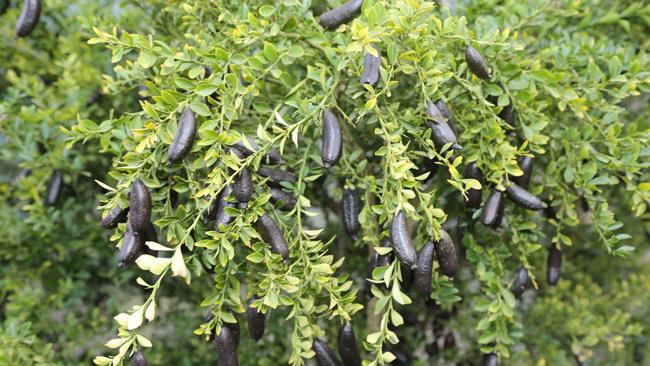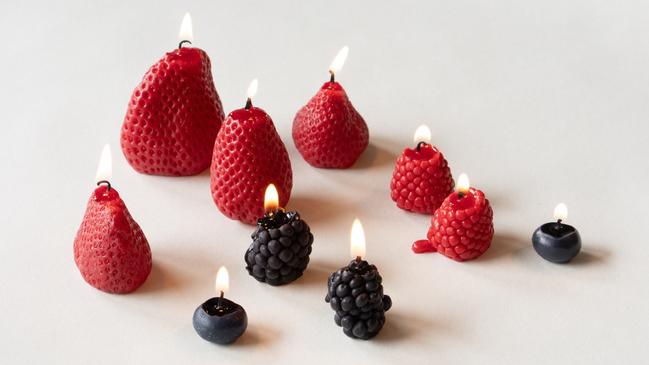This native citrus is a taste sensation - and easy to grow
It’s popular with chefs, used in sweet and savoury dishes, drinks or as a garnish. Are finger limes the native citrus we’ve all been sleeping on?

Finger limes are a native citrus, originally from sub-tropical rainforests around the NSW/Queensland border. The 2m-5m shrubby trees of Citrus australasica are spiny, with tiny leaves and white, fragrant flowers – but it’s for the “citrus caviar”, harvested mainly in autumn, that we grow them. The bead-like pulp can be pale to deep pink, red, green or yellow, and bursts on the tongue. It’s popular with chefs, used in sweet and savoury dishes, drinks or as a garnish. The leathery skins can be green, yellow, brown or dark red and don’t necessarily match the colour of the pulp inside. The plants are relatively easy to grow at home, needing less sun than regular citrus – dappled shade is fine. Give them protection from strong winds, especially during flowering and fruiting, when they also need regular water. They’ll tolerate mild frosts once established. Finger limes – especially dwarf varieties — grow well in pots and you can prune garden specimens to keep them to a manageable size. Expect fruit in the second or third year from named, grafted varieties. One of the most widely available is ‘Rainforest Pearl’, a small upright tree, reliably bearing green fruit tinged with crimson and filled with pale pink flesh.
Taste Pops
Oz Finger Lime sells more than 30 varieties online and at its Melbourne nursery.


Its breeding program creates new varieties each year, with an emphasis on cold and heat tolerance. ozfingerlime.com.au


Q&A
I understand that in Sydney daffodils and tulips will not flower again after the first year. Can I overcome this by storing the bulbs in the freezer after flowering?
Jayne Taylor, Sydney
Freezing bulbs will kill them. Tulips must have winter chilling – place stored bulbs in the fridge for six to eight weeks before re-planting. Daffodils will probably benefit from this too. Label them, as they can look like onions but are poisonous. After flowering, fertilise the bulbs and do not dig them up until all the foliage has withered. Store them in a mesh bag in a cool, airy, dark spot. Bulbs that succeed in warmer climates without lifting include jonquils, babianas, freesias, snowflakes and sparaxis.
My four-year-old, healthy hydrangea in a pot had only one flower each of the past two years but flowered well previously. As I can’t do the regulation prune of stems that flowered, what can I do?
Kim Martin, by email
Regular or mophead hydrangeas flower on the previous year’s stems. So this winter, do not prune stems that didn’t flower, as they should flower next summer. Check the plant is not in shade all the time; morning sun is ideal. Re-pot in winter into a slightly larger pot and apply a flower-boosting fertiliser from spring.
How can I deter the bandicoots that dig up my lawn and garden beds at night? Floodlights aren’t an option and Dynamic Lifter doesn’t worry them.
Mark Miller, by email
Bandicoot-proof fencing requires fine galvanised wire mesh buried to at least 150mm depth and 500 mm high. Bandicoots eat lawn grubs, snails, cockroaches, termites and spiders so there is an upside. You could apply beneficial nematodes (from ecogrow.com.au) to safely control lawn grubs that might be attracting the bandicoots
Send your questions to helenyoungtwig@gmail.com The best question of May wins $120 worth of lifelike fruit and vegetable candles, hand-made in Australia, from Nonnas Grocer. See the remarkable range at nonnasgrocer.com





To join the conversation, please log in. Don't have an account? Register
Join the conversation, you are commenting as Logout